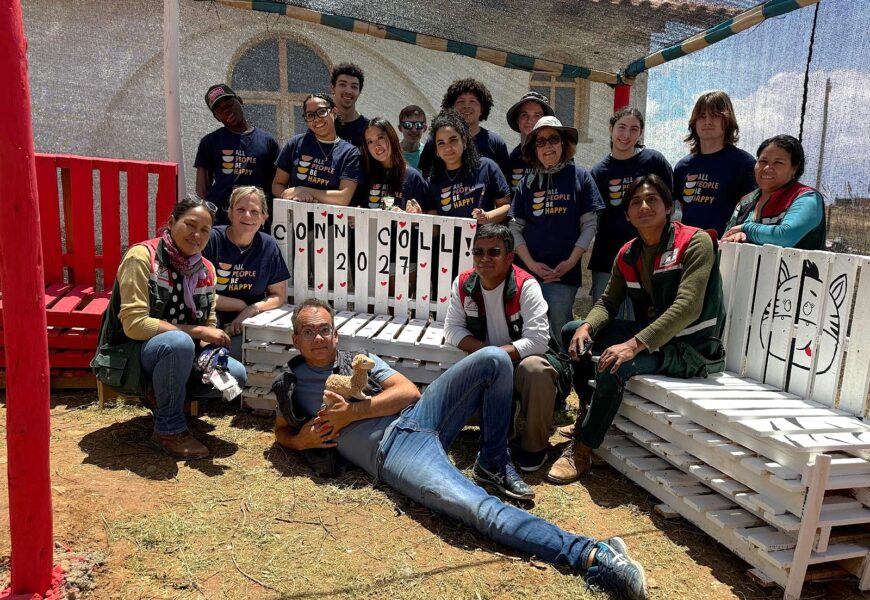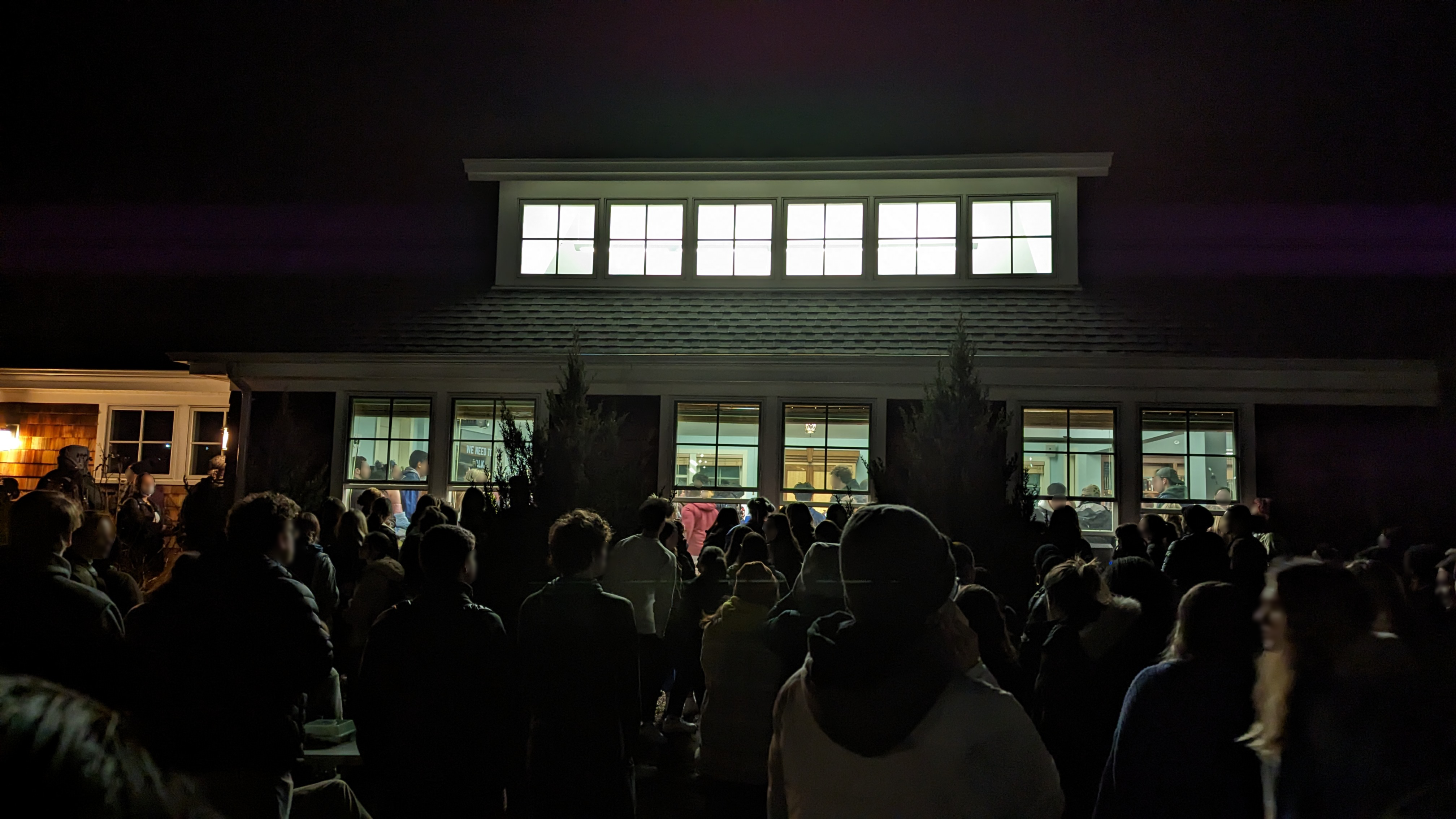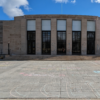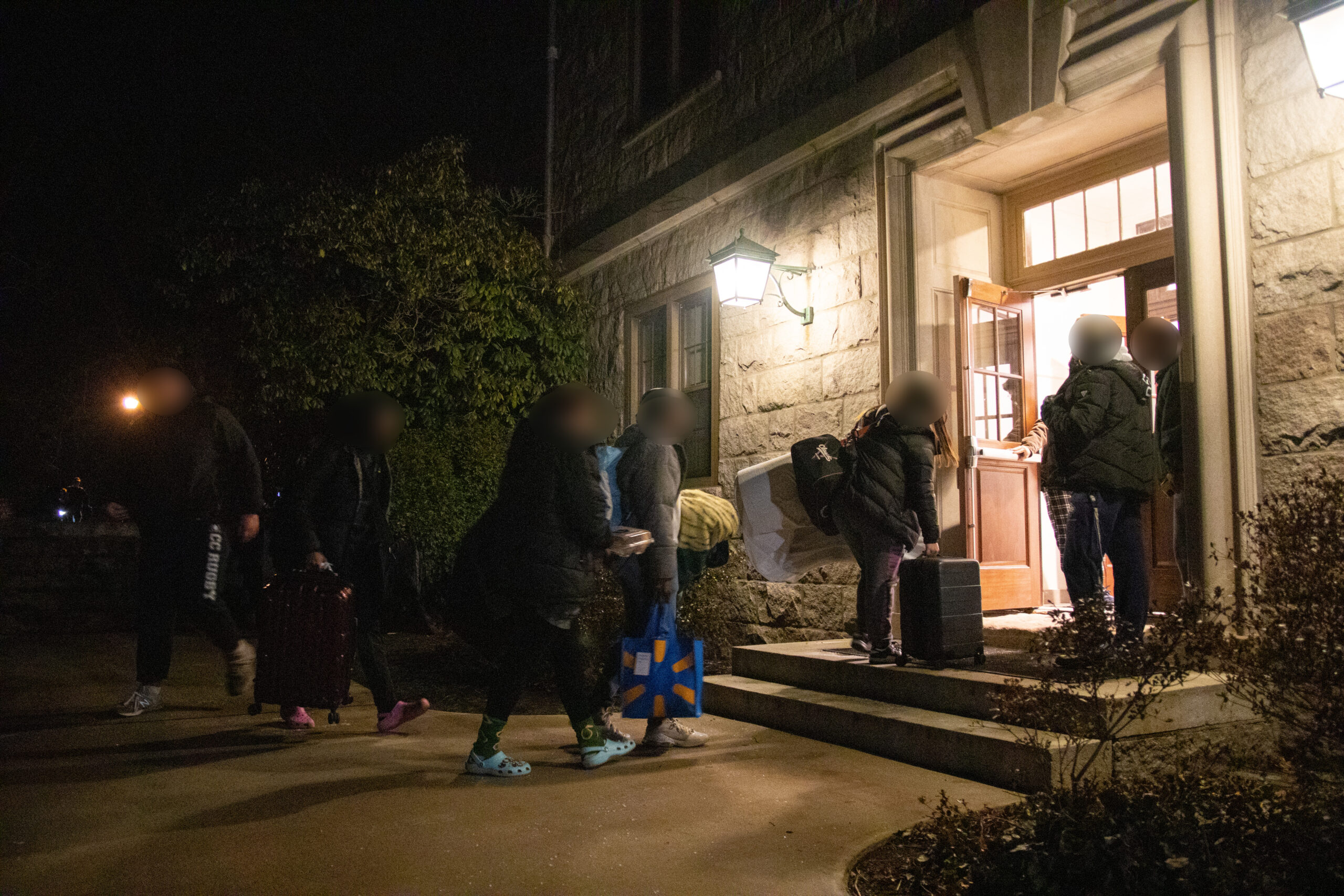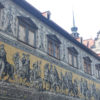Courtesy of Luke Corless
On March 9, a group of 12 students, faculty, and staff made their way to John F. Kennedy International Airport to embark on a 11 day trip to Cochabamba, Bolivia and the surrounding areas. After three pre-departure sessions with the partner organization on the ground, ‘AllPeopleBeHappy,’ multiple vaccinations from yellow fever to tetanus, and days of packing, the group was giddy to finally get into the air.
With a total of over 32 hours of travel time going from New York to Miami, Miami to Santa Cruz with a stop in Panama City, and finally from Santa Cruz to Cochabamba, the group was able to acquaint themselves with one another and forge bonds which would be critical for the entire trip.
Upon landing, the warm weather mixed with a cool breeze struck the group at the same time the realization that they were 8,360 feet above sea level (for reference, the arboretum has an average elevation of 184 ft above sea level). On the ground, the group was picked up by the Director of Communications Melissa Nix, and Site Director Mauricio Ramirez to go to ‘Centro Palestra,’ their first home in Cochabamba.
After a dinner, time to shower, and relax, the group suited up for a night time tour of the North of the city. They passed by ‘Las Islas,’ a popular street food destination, famous squares like ‘Plaza de Colón, Plaza de Las Banderas, and Plaza Catorce de Septiembre where the group tried some local snacks,’ as well as one of the largest Mormon Churches in South America.
On the first official day of programming, the group met with Arnold Brouwer, the General Director of the local NGO ‘Alerta Verde’ the group would spend the next week working alongside. Brouwer and Ramirez gave a presentation about Bolivia’s current water crisis, sustainable ways to grow produce, children’s education, and Bolivian politics and culture. After a round of questions, the group loaded into the bus to visit the ‘Cristo de la Concordia,’ formerly the largest statue of Christ in South America, ever so slightly beating out the Christ the Redeemer statue overlooking Rio de Janeiro. The base of the statue gives stunning views of Cochabamba and the surrounding mountains at an elevation of over 9,100 feet above sea level.
The second day saw the group begin work with Alerta Verde in the ‘San Salvador’ neighborhood of Cochabamba. The neighborhood sits in the southern mountains overlooking the city with a smattering of brick homes and empty plots of land. A generally lower-income neighborhood in the city in dire need of assistance was an area Alerta Verde was quite familiar with. A water crisis affecting the entire country is exceptionally prevalent in San Salvador. The Alerta Verde crew explained that they would be using the empty plot nearby the local school to build an outdoor school for the students to get tutoring help, practice reading, and learn about sustainable agriculture. The group immediately got to work digging holes and mixing cement for the classroom’s posts to be fitted. After about three hours, all of the posts were up and the cement was hardening as the group began descending the mountain for lunch at ‘Dimas.’
The group was greeted with a ‘Welcome Connecticut College’ chalk sign as they were able to try Picante de Pollo and Picante de Lengua, Bolivian dishes that translate to chicken in spicy sauce and cow tongue in spicy sauce. While eating lunch, the group gave a local reporter a clip stating where they are from and how much they liked the food before heading to the ‘Palacio Portales.’ A current cultural center and former mansion of Bolivian tin baron Simón Patiño, is a stunning architectural and interior design exposition with rooms in the mansion being inspired by Islamic architecture in Spain and Catholic buildings in the Vatican.
After the tour, the group returned to the hostel to pack their belongings before departing for their host families. Matched in twos, the group was set to live with local Cochabambinos, with families ranging from a pair of sisters to a house of over half a dozen people plus pets. Each duo was set to have their own experience of life in Cochabamba with different foods, perspectives, and traditions.
After a night in their new homes, day three continued work in San Salvador by connecting the posts with chicken wire and wooden bars while sowing a tarp to act as the roof of the structure. Poor weather hampered that day’s progress, causing the group to cut work early for lunch before heading to ‘La Cancha,’ Cochabamba’s main shopping destination and claimed “the largest open-air market in South America” by Bolivia Travel Site. They have just about anything imaginable. From smart TVs to prom dresses, local attire to American branded joggers, shoes and snacks, La Cancha is Cochabamba’s one stop shop. The market also proved incredibly affordable for gifts with the US dollar converting at an average rate of $1 to 10-12 Bolivianos.
With shopping time concluding, the final destination of the day was Ramirez’s home where the group learned about the significance of the Coca leaf to Bolivian culture. While completely illegal in the United States for its potential to be turned into cocaine, the Coca leaf is a part of daily life in Bolivia. Used to settle an upset stomach through teas, chewed fresh or as gum to stay awake, or as a flavor in chocolate the leaf is all over Bolivia and makes up a notable part of the nation’s culture and domestic economy.
The group also participated in K’oa, an offering to Mother Earth where the K’oa bowl is filled with the herb bearing the same name, sugar figures representing wishes, bright ornaments, confetti, and fake bills. The bowl is lined with paper that four individuals from the group, two men and two women, one in each corner lowered into a fire pit in unison to begin the ritual. The group took time to reflect on their struggles and blessings while taking turns to rotate the money counterclockwise around the fire while asking for the best wishes upon their loved ones before allowing the fire’s speakers to wash away the bad things of the past.
The next day was followed by the group painting the posts before placing the tarp over and nailing it into place. Rocks and twine were used to attach the tarp to the chicken wire, holding the structure firmly in place. With the exterior complete, the group’s focus after the weekend would be on the furniture for the classroom. The group then tried silpancho, a popular Bolivian dish with rice and boiled potato with a layer of smashed beef patty topped with fried eggs and salsa before heading to ‘Proyecto mARTadero’ to learn about Bolivian art and how to make mosaic pieces. Working out of a former slaughterhouse, the project is home to a collection of local and international artistics with digital exhibitions to parkour courses for locals to take in. The group were given the opportunity to learn how to make mosaic works from entirely recycled pieces of tile by hand. Using hand held tools and a cement like substance, the cohort was able to form the Connecticut College logo each with their own unique spin.
Everyone returned to their host families before heading to ‘El Mesón del Cantor,’ a formal dinner location where the group was served ‘Pique macho,’ a mix of beef, red onion, green pepper, tomato, french fries while listening to live music from the group Chivo & Co. and watching traditional Bolivian dance.
To start Saturday, the group visited a water treatment plant in the surrounding town Ucureña. The site engineer explained that over 5,000 families in the town are connected to the plant that recycles water for the town’s irrigation system. The tour of the plant showed stunning views of the countryside while presenting an impressive technological innovation that Bolivians are hoping to use to combat their water shortage.
The next stop was a quick one at the ‘Convento San José de Tarata,’ a church in the town of Tarata famous for its colonial architecture and being the home of two former Bolivian presidents. After exploring the town square, the group loaded the bus for lunch at ‘Laguna La Angostura’ for Bolivian seafood like Pacu and Trout.
Sunday was the day for the host families, which after a group breakfast of the famous Salteñas, would be bringing their temporary residents on activities across the city. Some had a more relaxing day of snacking and board games while others celebrated birthdays and one group was present for a marriage proposal.
The next day the group began the interior for the classroom by cutting wooden pallets for benches and sanding cable reels for tables. With painting commencing on some of the pieces of furniture it became clear that the group would be able to complete the project in their short time in Bolivia. After work and lunch they took a tour of ‘The Convento-Museo Santa Teresa’ to learn about Bolivian Nun’s quarters and the history of Catholicism in the country. The group ended the night with some empanadas and a folkloric dance class with local dancers. The group took place in solo, partner, and collective dances while trying on traditional Bolivian head pieces.
The last full day of the trip gave the group the chance to finish their work doing final touches on tables and benches. The school students came to look at their new classroom and sing the group some songs in English, Spanish, and quechua. After installing a bench and taking some final photos, the group said their goodbyes to Alerta Verde and San Salvador before returning to their host families. The cohort packed their bags for their host families to bring them back to the original hostel for their last night in Cochabamba. At the hostel families and Camels collected in the courtyard for photos, hugs, and tears. It was difficult for many to say goodbye to the families who had so graciously taken them into their homes for the past week.
The final day was a short one of shopping in the city’s downtown market before heading to the airport. Goodbyes and invitations to campus were given to Directors Nix and Ramirez who had accompanied the Camels for their entire journey.
Going through security was bittersweet as the group recognized they were leaving behind a nation and city they had become very much attached to; however they were returning to the states with an understanding of a formerly unfamiliar culture, international friends and communities, and a new outlook on the world.

